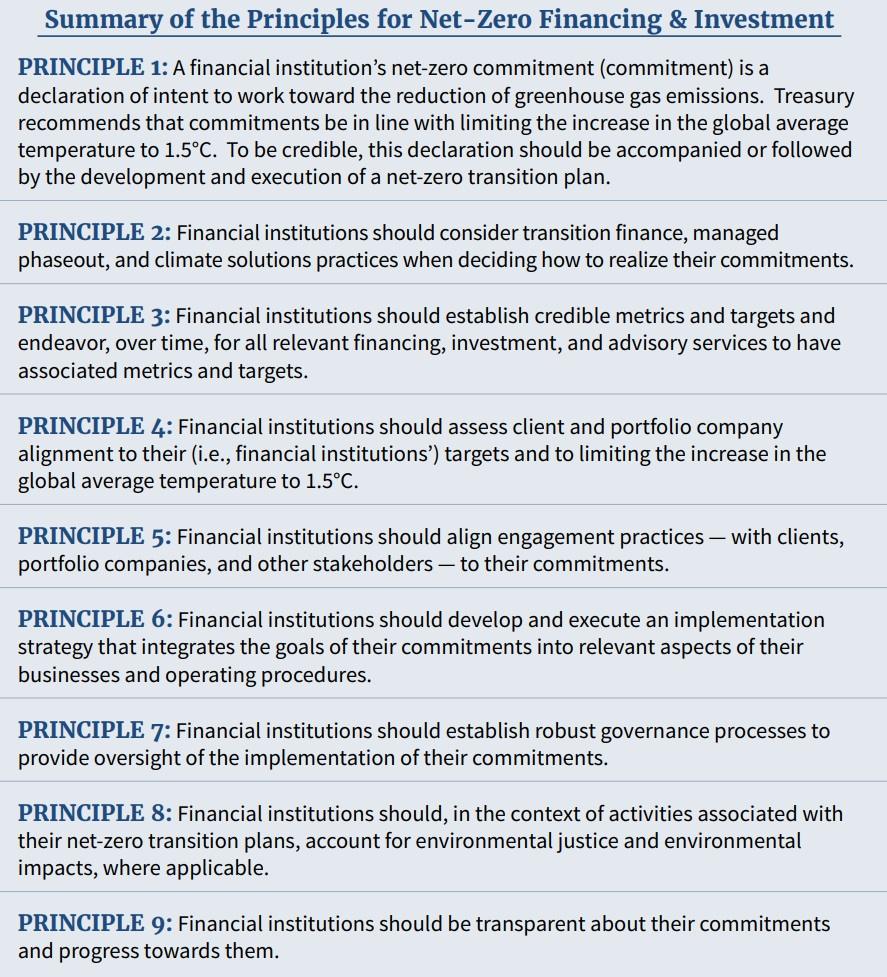U.S. Treasury Releases Principles for Net Zero Commitments by Financial Institutions
The U.S. Treasury announced today the publication of its new “Principles for Net-Zero Financing & Investment,” aimed at establishing a set of best practices, and promoting consistency and credibility for private sector financial institutions in making and pursuing net zero commitments.
Introduced as voluntary principles, the new publication focuses primarily on financial institutions’ Scope 3 financed and facilitated greenhouse gas (GHG) emissions, which typically account for the vast majority of financial firm’s carbon footprint.
According to a Treasury statement announcing the publication, the Principles come as a “massive economic shift” is underway, driven by the climate crisis, resulting in increasing demand for greenhouse gas (GHG) emissions reduction technologies, products and services, clean energy, and climate adaptation solutions across sectors. While these shifts are fueling the growth of new industries and business models, the Treasury added, building these new industries will require “a private financial system that allocates increasing amounts of capital and expertise to the companies and people building this new clean energy economy.”
The statement added:
“The Principles that Treasury is unveiling are intended to support this growth.”
The publication includes 9 Principles, which establish that net zero goals set by financial institutions should be in line with the goal of limiting the increase in global average temperature to 1.5°C, and that the goals should be accompanied by a net zero transition plan. Financial institutions are also guided to establish credible metrics and targets for all relevant financing, investment, and advisory services, to align their engagement practices with client and portfolio companies with their net zero commitments, and to be transparent about their goals and progress towards them.
See below for a summary of the Treasury’s new Principles, and click here to view the publication.






